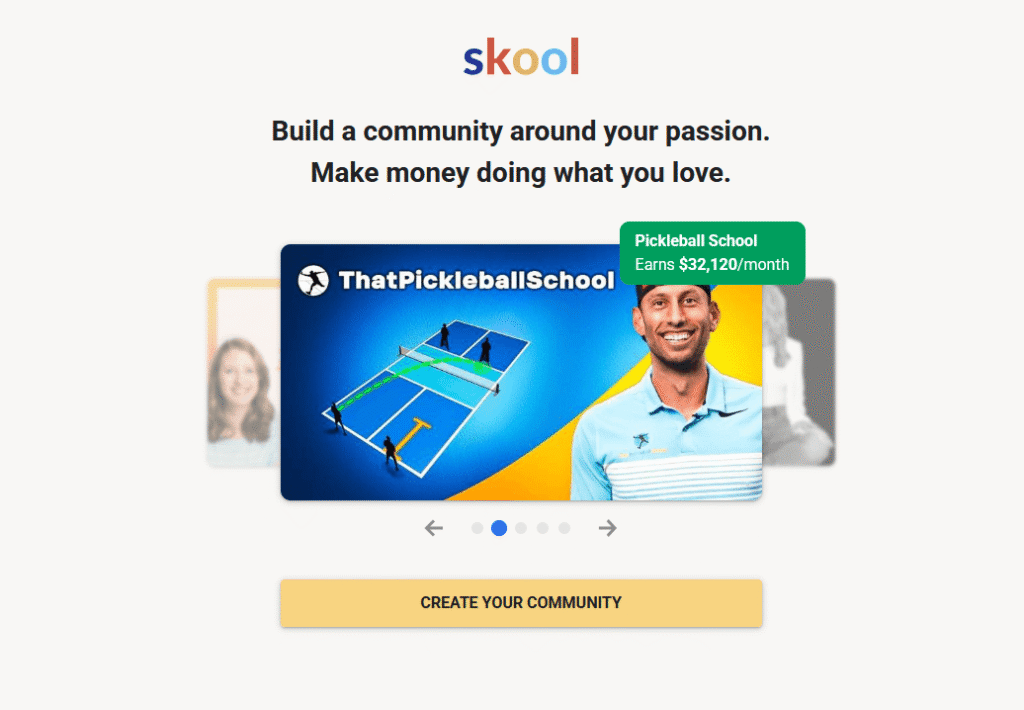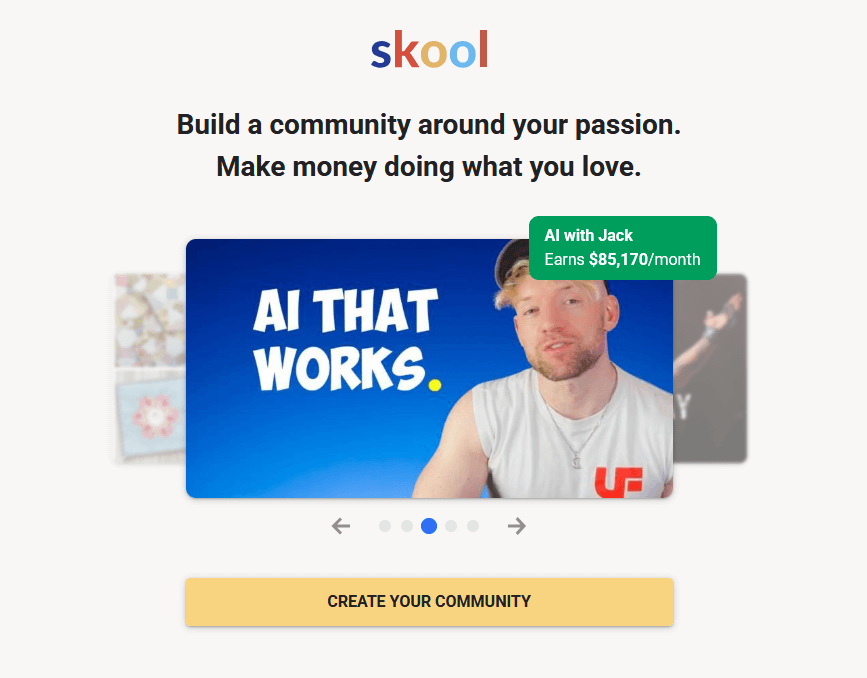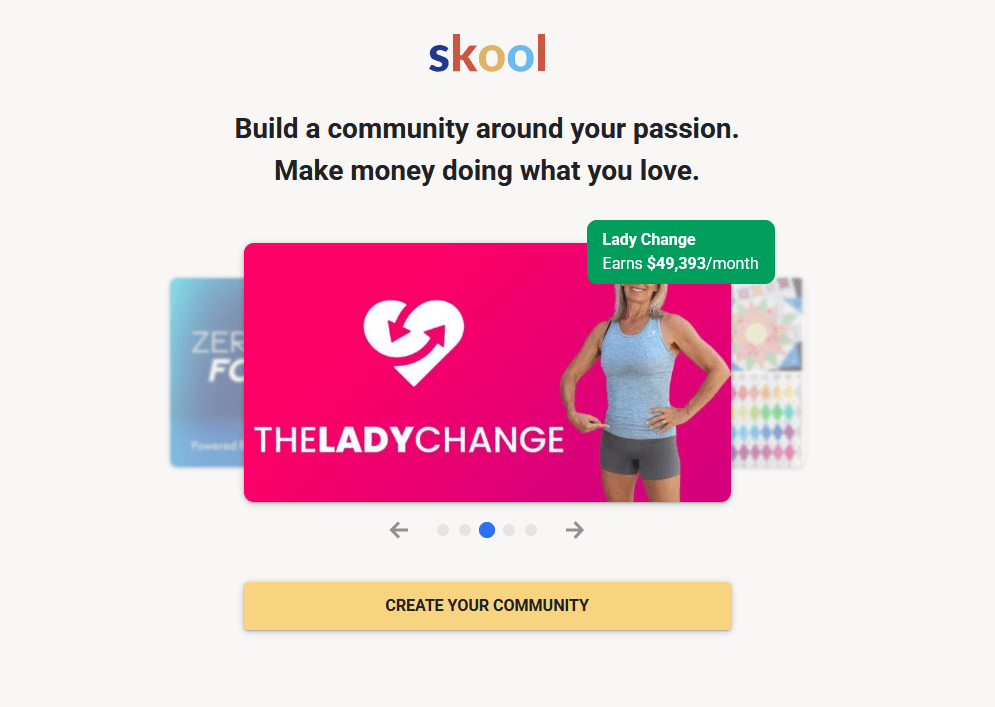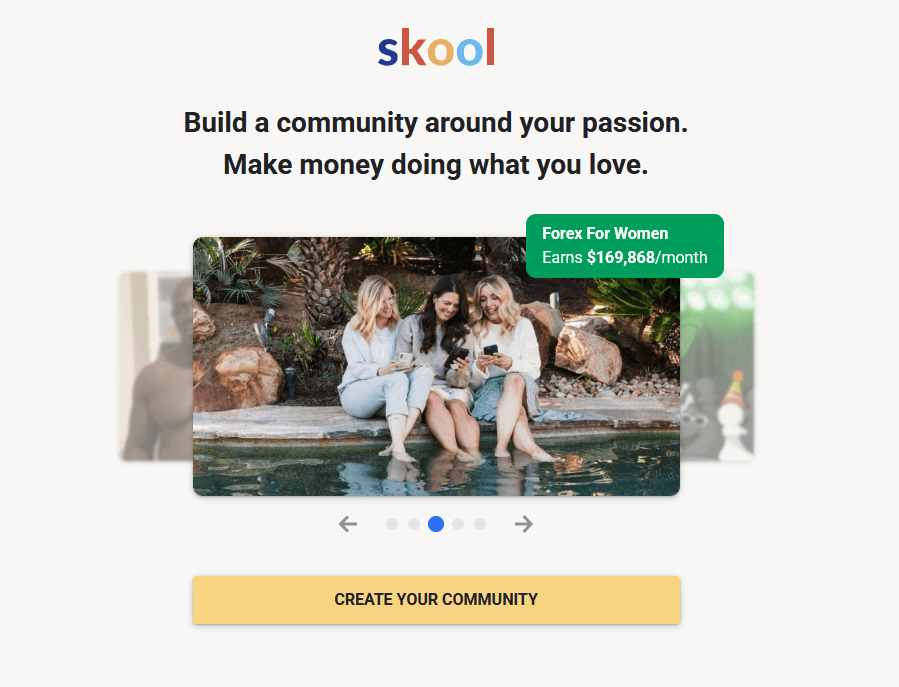How Much Money Can You Make on Skool with Your Own Community?
If you’ve been online lately, you’ve probably seen creators promoting their courses, coaching, or private groups. But what’s really working right now?
One of the most consistent earners is something simple: a paid community.
And one platform in particular, Skool, is helping creators earn steady, recurring income by doing just that.
🧱 What Is Skool?
Skool is a platform that lets you build a private online community with a built-in course area, calendar, discussion board, and member hub.
It’s not a sales page tool or a link-in-bio app. It’s not trying to be TikTok. It’s a place where your people can join, stay, and learn all in one spot. There are no algorithms, no ads, no distractions.
You charge a monthly fee. Skool handles the access. You keep the content and the community running.
💡 How Skool Makes You Money
Skool lets you:
- Charge a monthly membership fee
- Host free or paid courses
- Run live calls, challenges, or accountability groups
- Refer others to Skool and earn $30/month per referral
There are no upfront platform fees. You only pay Stripe’s transaction fee.
📊 Real Income Examples from Skool Communities
These aren’t theories. These are public Skool groups with visible member counts and prices. Here’s what they’re doing:
Pickleball School
Teaching one of the fastest-growing sports in the U.S.
→ Making over $32,000/month

Simple lessons, coaching, and a lively member space for fans of the game.
AI Automation School
Helping business owners and freelancers use AI tools to save time
→ Earning $85,000+/month

The value is in saved time, and the community shares prompts, workflows, and results.
Weight Loss School
Focused on women’s weight loss through habits, accountability, and community
→ Making almost $50,000/month

Combines fitness, meal plans, and group support. Weekly check-ins keep members engaged.
Forex for Women Club
Teaching forex trading to women globally
→ Bringing in nearly $170,000/month

They offer signals, live trading rooms, and mentorship. High-ticket niche with serious buyers.
You’ll show these with group images underneath this builds trust and lets the reader see it’s real.
🛠️ How Skool Compares to Other Platforms
Stan Store
Great for creators who want a quick storefront to sell a few products from TikTok or Instagram. But it’s better for selling than building a community. You’re limited to a handful of product cards, and deeper learning features (like forums or unlockable content) are missing.
Whop
Whop offers modular storefronts where you can sell memberships, downloads, and coaching. It includes apps like chat, forums, and even affiliate tools. But its layout leans more toward marketplaces and dashboards, not a tight-knit group experience.
So why choose Skool?
If your main goal is to build a online community, help people connect, and offer deeper learning, Skool is designed for that.
You get:
- A course library
- A private feed
- A built-in calendar for live sessions
- Leaderboards for gamification
- Lifetime access or subscription options
And no distractions.
💸 How Much Could You Earn on Skool?
Here’s what it looks like at different price points:
| Members | Price/Month | Income |
|---|---|---|
| 50 | $29 | $1,450/mo |
| 100 | $49 | $4,900/mo |
| 200 | $79 | $15,800/mo |
| 500 | $99 | $49,500/mo |
Final Thoughts
Skool isn’t for everyone.
If you just want to sell a quick PDF from TikTok, use Stan.
If you want to build a dashboard-style hub, Whop works.
But if you want to create a long-term community that pays you monthly, while helping real people, Skool is the move.


